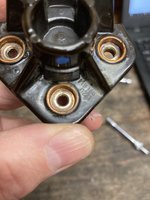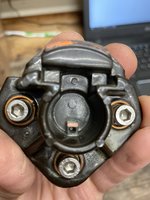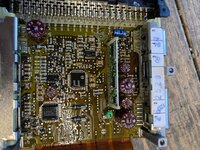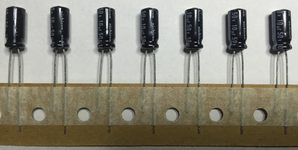Plugs, wires, caps, rotors, insulators, and coils all new.
Hmmm... IMHO those other possibilities are getting slim on the hit list, simply because they control more and more things as you work your way back to the LH unit. For example, the EZL has two 'units' one for each coil, and (while there is probably WAY more to it) their main function in regards to the ignition process should be to turn the current to the coils ON, and then OFF, after a given duration as a function of engine load, environmental conditions etc. A relatively simple task in comparison to what is going on across all the High Voltage equipment that you have already replaced. But you never know, anything is possible when it comes to electronics.
Where are you located? If in the PNW, you should swing by and we can hook the scope up to see what is going on.
Next upstream electrical is to swap EZLs, Egas, and LH modules to see if there's a difference.
Wondering if any of those could be responsible for intermittent misfires?
Hmmm... IMHO those other possibilities are getting slim on the hit list, simply because they control more and more things as you work your way back to the LH unit. For example, the EZL has two 'units' one for each coil, and (while there is probably WAY more to it) their main function in regards to the ignition process should be to turn the current to the coils ON, and then OFF, after a given duration as a function of engine load, environmental conditions etc. A relatively simple task in comparison to what is going on across all the High Voltage equipment that you have already replaced. But you never know, anything is possible when it comes to electronics.
Where are you located? If in the PNW, you should swing by and we can hook the scope up to see what is going on.



















 ) After a certain amount of time (a given number of seconds) of accelerator application with the car accelerating its as if the engine finally catches up with itself, and operates 'normally', until it gets to the next stop sign or light. The behavior when it 'catches up with itself' is almost as if the parking brake was on, and was suddenly released. And no...the parking brake is not on when this occurs. lol!
) After a certain amount of time (a given number of seconds) of accelerator application with the car accelerating its as if the engine finally catches up with itself, and operates 'normally', until it gets to the next stop sign or light. The behavior when it 'catches up with itself' is almost as if the parking brake was on, and was suddenly released. And no...the parking brake is not on when this occurs. lol!







